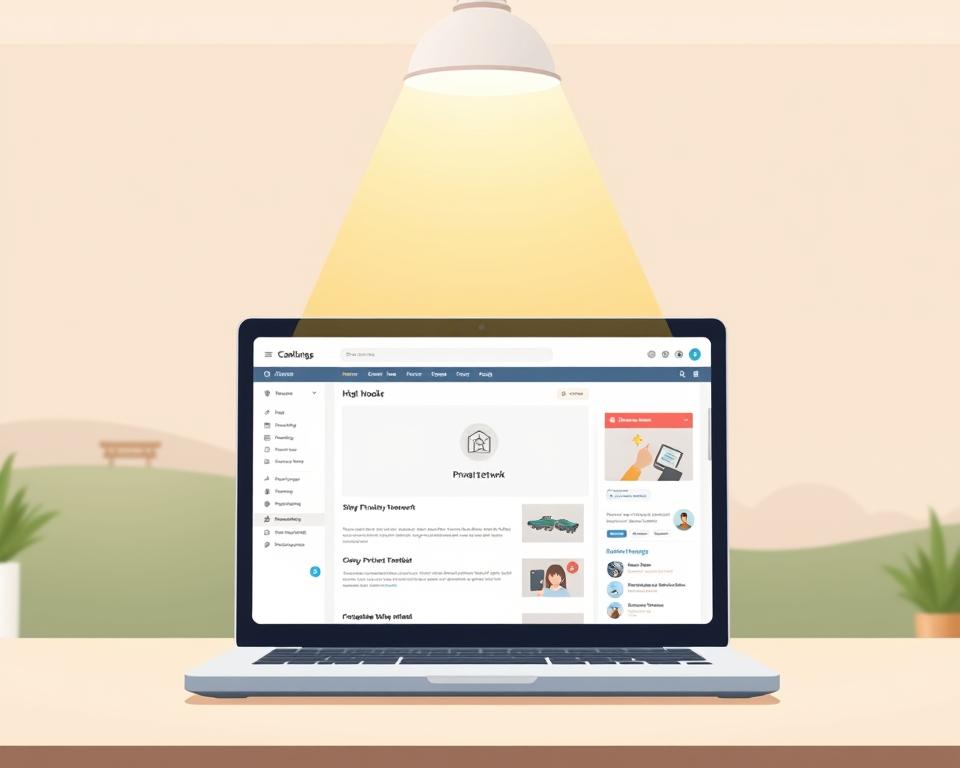Private Blog Network Link Fundamentals
Did you realize almost 60% of SEO experts have employed PBN links? A PBN’s main draw lies in how it can elevate a domain’s credibility. That often translates into higher SERP positions. However, what exactly is meant by PBN within SEO? Although it appears to offer rapid ranking gains, PBN services carry substantial dangers. Those dangers include harsh Google penalties. We’ll unpack what what are PBN links are and why so many SEOs can’t resist them.
What is a Private Blog Network (PBN)?
Essentially, a PBN is a cluster of blogs designed to funnel link juice to a primary domain. It works by sending SEO value via backlinks from secondary sites to your core site. By leveraging expired domains with lingering trust, PBNs present a convincing front to crawlers.
A PBN’s intent is straightforward. Site owners use them to improve their online presence. They achieve this through:
- Getting valuable backlinks to enhance rankings.
- Dictating anchor text and placement for optimal relevance.
- Creating an ecosystem of interlinked blogs that appear organic.

How do Private Blog Network Links Work?
PBN links work by creating private blog network backlinks that mimic natural links. By funneling link juice from a PBN site, you trick search engines into boosting your site’s authority.
The process involves carefully chosen keywords and domains within a network of blogs. Yet despite potential instant gains, the method carries grave dangers.
To be effective, backlinks must appear natural, with relevant content around them.
Why SEOs Love PBNs
A private blog network (PBN) offers numerous advantages for SEOs looking to enhance their backlink profiles. One of the primary benefits is the immediate control over backlinks.
Leveraging aged domains with residual trust is a PBN hallmark.
With PBNs, you can tailor anchor text strategy to pinpoint exact keywords.
PBN Pitfalls
PBNs carry significant risks that every SEO strategist must weigh. A major concern is the risk of Google penalizing websites that use these networks.
Why Some SEOs Choose PBNs over Traditional Link Building
Conventional outreach can be slow and uncertain. PBNs offer a unique advantage: a sense of control over backlink strategies.
Best Practices for Managing PBNs
Effective pbn management demands careful attention and adherence to best practices. Ensure no footprints link your PBN to your main site.
Spotting PBN Links
Spotting PBN links on your site is key to keeping your domain reputation healthy.
| Indicators of PBN Links | Description |
|---|---|
| Low-Quality Domains | Links from domains with poor authority or less than optimal rankings. |
| Irrelevant Content | Links embedded in content that does not match your site’s niche. |
| Suspicious Anchor Text | Repetitive or irrelevant anchor text patterns. |
| Thematic Similarity | Lack of a coherent theme among linking pages and domains. |
Using Google’s Disavow Tool
- Identify harmful PBN backlinks through thorough analysis.
- Create a disavow file correctly, listing specific URLs or domains to disavow.
- Upload the disavow file to Google Search Console.
Ethical Link Building Alternatives
High-quality content and influencer collaborations also drive organic links.
Myths Surrounding Private Blog Networks
Many assume PBNs are risk-free quick fixes.
Future of Private Blog Networks in SEO
| Factor | PBNs | Future SEO Practices |
|---|---|---|
| Content Quality | Low emphasis on genuine content | High emphasis on high-quality, valuable content |
| Risk Factor | High risk of penalties | Lower risk with authentic practices |
| User Engagement | Limited engagement | Enhanced user interaction and loyalty |
| Sustainability | Unsustainable in the long term | Focus on sustainable growth |
Final Thoughts
Private Blog Networks (PBNs) might seem like a quick way to boost search engine rankings.